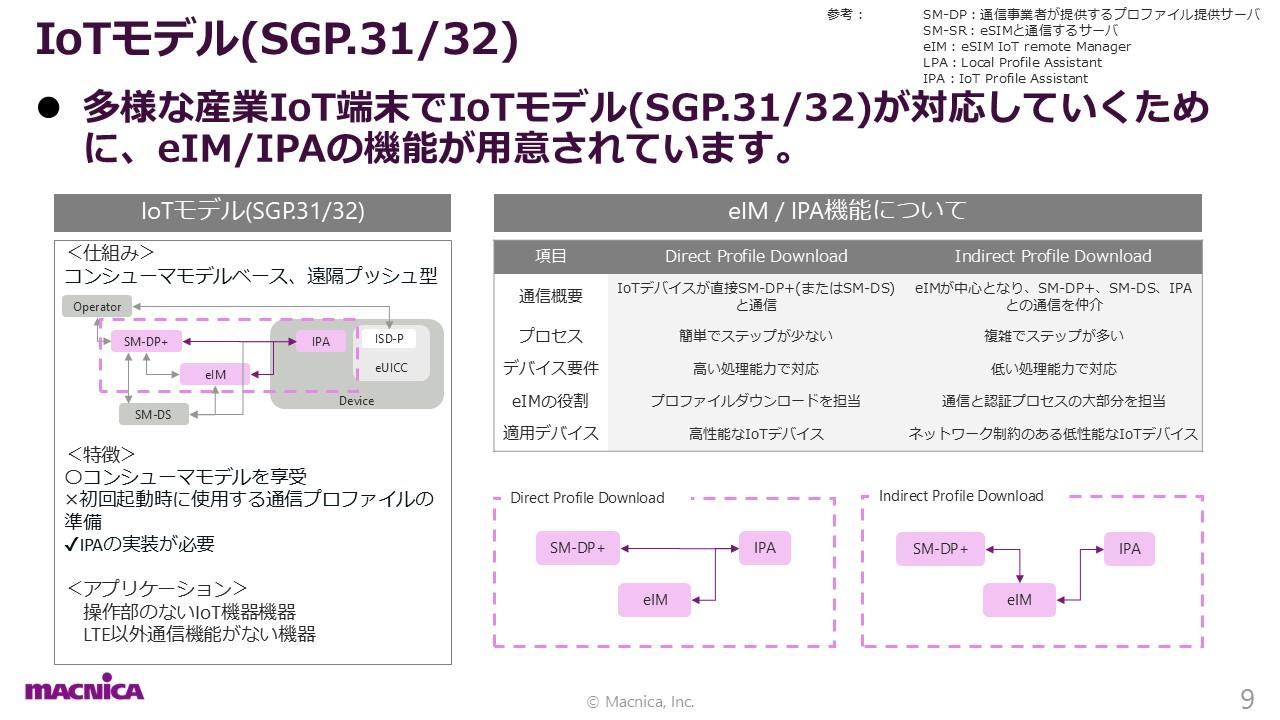
Connect SIM by macnica
ConnectSIM by Macnica
How the IoT model works and what is required for remote provisioning
Introduction
Remote provisioning allows you to remotely and securely rewrite the SIM's communication profile.
The IoT model is designed to maximize the flexibility and scalability of remote provisioning, and is expected to play a central role in future IoT deployments.
In this column, we will provide a detailed explanation of the basic structure of the IoT model, the components required to achieve remote provisioning, and key points to consider when implementing it.
Basic structure of the IoT model
In the IoT model, multiple communication profiles can be stored in the eSIM (eUICC) and switched between remotely as needed.
This eliminates the need for on-site SIM card replacement, resulting in more efficient operations and flexible communication control.
This model combines the stability of centralized management like the M2M model with the flexibility of the consumer model, and is increasingly being used in a variety of fields, including agriculture, logistics, and smart cities.
Required components
To achieve remote provisioning in an IoT model, four key elements are required:
|
element |
role |
|
SM-DP+ |
A server that manages the generation and distribution of communication profiles. Supports multiple businesses. |
|
LPA |
Software that controls profile downloads and switching on the device. |
|
eUICC |
The hardware part of the eSIM that stores profiles and enables switching. |
|
Security Infrastructure |
It is responsible for encrypting and authenticating communications and profiles, supporting safe operation. |
By combining these elements, a system is created that allows for safe and reliable remote profile distribution and switching.
Point of introduction
When introducing an IoT model, it is important to consider and prepare the following points in advance.
-
・Selection of SGP32 compatible carriers
→ By choosing a provider that supports profile distribution, you will have greater operational flexibility. -
・Design of IoT devices that can be equipped with LPA
→ It is necessary to check whether LPA can be implemented in terms of both hardware and software. -
・Operational design of profile switching conditions
→ By clearly defining triggers for switching, such as changing regions, communication failures, or rate plan changes, smooth operation is possible.

Summary
The IoT model is designed to maximize the flexibility and scalability of remote provisioning, and is expected to play a central role in future IoT deployments.
- The key to implementation is understanding and preparing the four components: SM-DP+, LPA, eUICC, and security infrastructure.
- By clarifying the selection of telecommunications carriers, equipment design, and operational conditions, it becomes possible to build a more efficient and secure IoT environment.
More articles here
About Connect SIM by macnica
Connect SIM by macnica is a communication service for IIoT (Industrial IoT) provided by Macnica.
We offer customized communication plans for NTT Docomo lines and multi-carrier SIM cards tailored to your needs.
We contribute to optimizing communication costs by proposing flexible communication plans that suit our customers' usage.
We also provide samples for verification free of charge, so please feel free to contact us.
